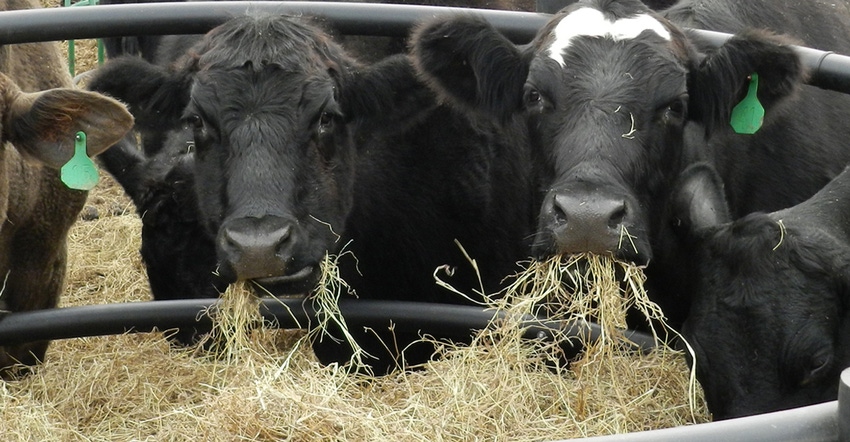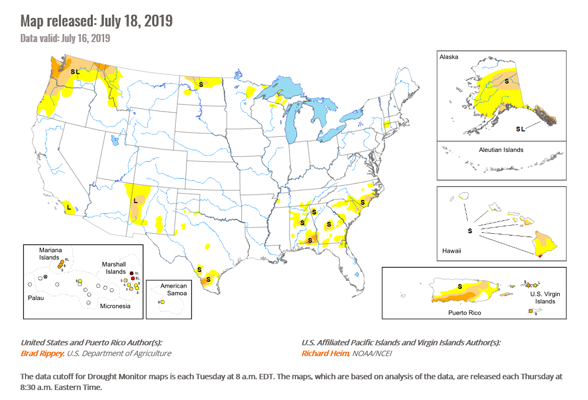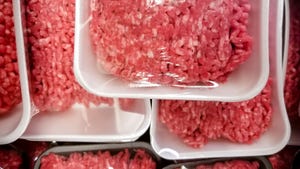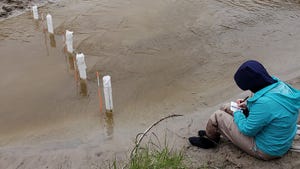Feeding this year's hay crop: How rain can affect hay quality
We've enjoyed one of the rainiest summers in recent memory. Weather can change quickly, but currently, hay and forage production are plentiful in many regions.
September 18, 2019

Sponsored Content
Many of us have enjoyed one of the rainiest summers in recent memory. We all know the weather can change in a hurry, but at the moment, hay and forage production are plentiful in many regions. While the quality of this hay may not always be the best due to frequent rains (more on this later), the yield is there.
The recent Drought Monitor Map (below) may not show any drought-stricken areas in the U.S., but the hay crop is certainly not plentiful everywhere.

Many people hoped that the release of the USDA Feed Outlook on July 16 would include some insight into how our corn crop is progressing. While that question remains largely unanswered, if you continue reading the report, you will notice the inclusion of this headline:
"Hay acreage lowest in more than a century"
A report from the National Agricultural Statistics Service (NASS) includes this additional commentary on hay:
The NASS acreage report projects U.S. hay harvested acreage at 52.8 million acres in 2019. This is down only slightly from the 2018 harvested acreage but is the lowest harvested acreage since 1908. Prices for hay continue to rise on limited supply combined with strong domestic and export demand, with NASS reporting $152 per ton for hay (excluding alfalfa) and $204 per ton for alfalfa in May. These are the highest monthly prices since 2014 for both types. Record-low hay production is expected in California, Illinois, Maine, Michigan, New York, Ohio, Pennsylvania, Vermont, Washington and West Virginia. The wet spring and cool June has impacted hay as well as other feed crops...
Hay cost woes
I often hear cattlemen say, “With the cost of hay so high, I cannot afford to also buy a (protein) supplement.” If a supplement makes sense in your operation with lower-priced forage, it will only make more “cents” with higher-priced forage.
Providing supplemental crude protein when feeding cattle lower-quality forages will boost digestibility (i.e., the release of energy). It is not uncommon for supplemental crude protein to increase the digestibility of a low-quality forage by 10%. This means that every ton of forage will provide more energy. As such, theoretically, you could feed less of the forage and achieve similar performance results. There is a 10% increase in released forage energy with this strategy.
A 10% increase on forage that is $150 per ton will always be worth more than a 10% increase on forage that is $100 per ton. For example, if you have two trucks but only have enough room to put one in the shed before an oncoming hailstorm, which would you choose: the new truck, worth $65,000, or the old one, worth $15,000? The answer is clear. In much the same way, you should strive to get more value out of your $150 forage than the forage that costs $100.
When we buy a supplement, most of us want to know what sort of return on investment it will provide. Supplements replace nutrients that are either missing or are only available in lower-than-desired quantities in the base diet/forage. Supplements can also provide performance-enhancing additives that are not available naturally; protein, macro and trace minerals, and vitamins are usually at the top of the list.
Circling back to the comment in the first paragraph about the quality of some of the hay being put up in between rainfalls, we’ve seen just about everything put up — from fairly good-looking hay to hay that was rained on to the point that it was almost black in color. The protein and vitamin levels in the hay crop this year will vary widely. In short, while the quantity could be good, the quality may be suspect — to the point that supplementation will be necessary to support optimal animal performance. CRYSTALYX® is also uniquely formulated to supply simple sugars and other carbohydrates to the rumen. This feature may play a larger role in assisting rumen fermentation this year, as rained-on and/or leached-out forages will contain far fewer of these rumen-enhancing carbohydrates.
Additionally, some of the lower-quality or even moldy hay could contain elevated levels of mycotoxins. In these situations, CRYSTALYX Blueprint 20 AN with Integral® A+ is worthy of your consideration.
CRYSTALYX Brand Supplements are available to your herd 24/7 and are an excellent way to increase the return on investment from your stored and purchased forage, no matter the cost. Just remember: Your return on investment will increase in line with your forage cost.
About the Author(s)
You May Also Like



